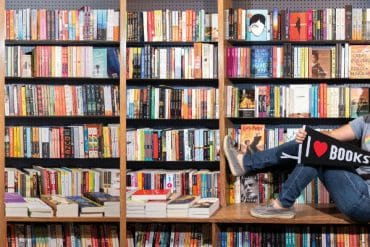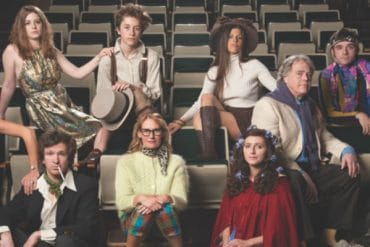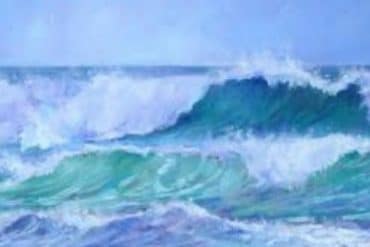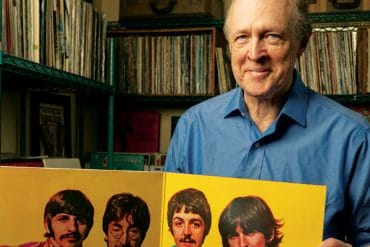A quick chat with Susan Hostetler of Hostetler Gallery and artist Ellen Carey.
N MAGAZINE: Tell us a little bit about your background in the world of art and what inspired you to open the gallery 35 years ago.
HOSTETLER: My life in Nantucket is my love story. David Hostetler started to show his work in the early 1970s and then opened his own gallery in 1983. We met in 1985 and a year later I said, “I can run this operation for us!” A caterer turned art director, I was learning as I went… helped that I have always loved art.
 N MAGAZINE: What do you love most about the business?
N MAGAZINE: What do you love most about the business?
HOSTETLER: I love the surprise of meeting people from all over the world who want art to reflect themselves in their home or business. I love the unexpected of learning what they are attracted to. I often learn about art, business and life from our clients. David and I have developed long and loving relationships with many of our collectors.
N MAGAZINE: This summer, you are featuring the work of Ellen Carey. How is her work different than others you’ve shown in the past?
HOSTETLER: This is the first time Hostetler Gallery has shown photography. I have wanted to represent a photographer and couldn’t put my finger on what I was looking for. I knew more what I did not want to show, until I was introduced to Ellen’s art. I opened her website and said, “WOW” out loud. I am reading more about her, her work and career to understand the art historic references, as well as the unique talent she is in the field. I am honored to be able to have her work in my gallery.
N MAGAZINE: What stood out to you about Carey’s diverse lens-based work?
HOSTETLER: Ellen Carey is a photography collector’s “must have.” Ellen Carey’s work is an art collector’s “must have.” Ellen Carey’s work is a beautiful non-representational view of the beauty of our world and each piece is so unique. There is total immersion in art-making and professional commitment with her. I have a visceral, primal reaction to her compelling art… I love it. It’s original in her approach, her process, and her scholarship and people notice that as soon as they lay eyes on her work. Her professional commitment is pushing her toward a trajectory to becoming an important person in photography.
 N MAGAZINE: What inspired you to start practicing with lens-based art and photograms?
N MAGAZINE: What inspired you to start practicing with lens-based art and photograms?
CAREY: Many of my projects start with a question. In the late 1980s, it was, “What does a 20th century abstract/minimal photograph look like?” My answer, “Struck by Light” (1992-2017). This inquiry led to an in-depth look at the history of photography, beginning at the dawn of the medium. I am interested in metaphors and genres created from the original history of a photogram, as well as picture sign and symbols.
N MAGAZINE: What makes your artistic approach of a photogram different than others explored in the past?
CAREY: Materials have meaning and I do my own “material tests.” It could be located in the physical object or tools used in photography; things you can’t see include ideas around perception and the biology of seeing. Color in my work is seen in a scope of hue and saturation, opacity or luminosity. Visual impact is underscored with expressions that find chaos and order, symmetry and asymmetry while my choices include randomness and chance. The end results contain high visual impact through my own guidelines and philosophies, which include the fours C’s — Concept, Content, Context, Citation, in the final image.
N MAGAZINE: The end result of your work is so pleasing to the eye and unique in its own way. Can you describe the process of using shadows and color in your work to create those final images?
CAREY: I am interested in unconventional approaches to art making while supporting concepts in photography, such as light and shadow. The surface of the paper in its topography introduces a break with the historical photogram, which lays the object on the paper; this further gives my work content/context/citation. I use only light and the paper supports the creation of the “shadow” through the “ding”, the latter a professional no-no and taboo. A performance is documented, offering a new kind of record; it is different from the traditional history. What is left offers the object as a mirror or reflection of my imagination, creation, and action.
 N MAGAZINE: How do you expect viewers to feel or react when they come through the gallery and see your most recent work?
N MAGAZINE: How do you expect viewers to feel or react when they come through the gallery and see your most recent work?
CAREY: “How is this picture made?” followed by “What is this a picture of?” are questions often asked about my work. The first addresses process and it is that very process which becomes the subject. The second finds an image without a traditional photographic subject, neither portrait, still life nor landscape. In the realm of color, my work introduces color as subject through process.
My experimental photography purposely challenges our culturally and historically prescribed expectations around the photograph and these picture signs. The ‘what’ is in front of the lens as its “camera vision” is reversed. I use only light, wherever and whatever it strikes. My work intentionally upends traditional methods of “rendering” a photographic image with unusual approaches and combinations. This forces a break from the past, freeing a picture from a hierarchy of things to be captured to a picture that is made.
I think, in the end, the viewer is left to wonder on color and light, photography and image. To appreciate this great invention, from the beginning to the distance it has travelled, found in my contemporary, abstract and minimal color photograms.






